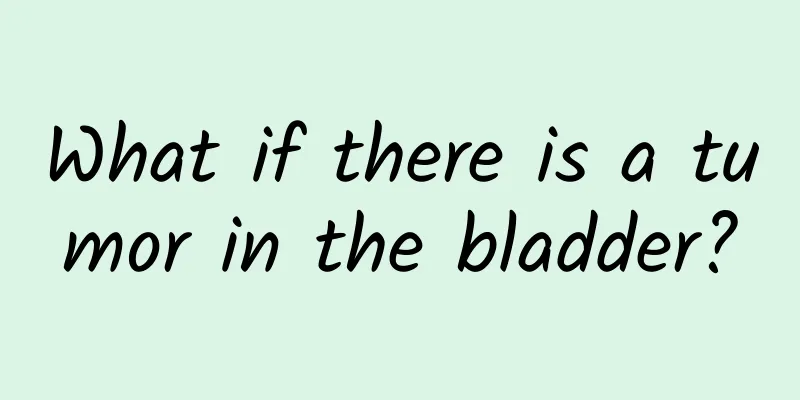Why is the urine the color of strong tea?

|
If the color of urine is like strong tea, you should be alert. This strong tea color is actually brown urine, which means that the bilirubin content is relatively high. If you have had gallstones or urinary tract infection before, this may cause such a phenomenon. This means that the patient has hematuria, which may not be visible with the naked eye at this time. Go to the hospital for a routine urine test in time. Causes Yellow urine is as yellow as strong tea, which is brown urine. It should be distinguished whether it is bilirubinuria or urobilinogenuria. Bilirubinuria is often caused by inflammation, tumors or stones blocking the intrahepatic or extrahepatic bile duct, causing sodium bilirubin to enter the blood. When the amount of sodium bilirubin in the blood exceeds a certain amount, bilirubinuria occurs. Urobilinogenuria is often caused by liver damage, such as hepatitis B, hepatitis C, etc., which causes increased intestinal absorption of urobilinogen, which enters the urine, resulting in urobilinogenuria. Or in patients with hemolytic anemia, after a large number of red blood cells are destroyed, a large amount of urobilinogen is absorbed through the intestinal wall into the portal vein circulation. Because the liver cannot convert the excess urobilinogen into bilirubin, urobilinogenuria occurs. Diagnosis 1. Pre-jaundice The period from when the patient first has symptoms to when jaundice appears is about a few days to 2 weeks. At the onset of the disease, patients often feel chills and fever, with a body temperature of around 38°C. A few patients may have a high fever for several days. The more prominent symptoms are general fatigue, loss of appetite, nausea, vomiting, especially aversion to greasy food, fullness and stuffiness in the upper abdomen, yellow urine like strong tea, and loose stools or constipation. During this stage, due to individual differences and complex and diverse patient manifestations, it is easy to be misdiagnosed, and special attention should be paid. For example, some patients present with upper respiratory tract inflammation, similar to a cold. Some patients may experience joint pain and be mistaken for dampness. A small number of people also have severe abdominal pain and mistakenly think it is acute abdomen. 2. Jaundice stage The patient's sclera (white part of the eye), skin and mucous membranes will turn yellow, reaching a peak within a few days to two weeks. At this time, the fever gradually subsides, but the digestive symptoms become more severe. The liver is enlarged and tender, and in about 10%-35% of patients the spleen is also enlarged and palpable. The white blood cell count is normal or slightly low, liver function tests are obviously abnormal, and serum bilirubin is above 17 micromol/L (1.0 mg). This period usually lasts about 2-6 weeks. Preventive Care 1. Passive Immunity The hepatitis B vaccine is administered once at birth, at the end of 1 month, and at the end of 6 months. The dosage depends on the different products. The anti-HBs produced can last for more than 3 years and should be strengthened every 5 years thereafter. For children born to mothers in the acute or recovery phase of hepatitis B (regardless of whether the e antigen is positive or negative), the use of specific high-titer immunoglobulin (hepatitis B human immune serum globulin, HBIG) can significantly reduce the hepatitis B virus carrier rate in infants, regardless of whether HBsAg is detected. The method is: inject 0.5-1 ml/kg (containing more than 100 U/ml of anti-HBs) once within 24 hours after birth, 3 months, and 6 months. When the passive immune antibodies disappear quickly, the baby becomes susceptible again. However, the incidence of infection has been significantly reduced. In 1983, my country reported that the hepatitis B immunoglobulin developed by the Changhai Biological Products Research Institute had a protection rate of 61.2% for blocking mother-to-child transmission in newborns. HBsAg-positive carriers should not breastfeed, and newborns should be isolated for observation. Passive immunization should be used first. 2. Active Immunity The use of hepatitis B immune globulin (HBIG) is passive immunization with a rapid protective effect. Newborns born to HBeAg or HBsAg-positive mothers should be given an intramuscular injection of 1 ml of HBIG immediately after birth (no later than 24 hours) and receive hepatitis B vaccine once at 1, 2, and 3 months. |
<<: How do antidepressants affect sexual function?
>>: Why do I feel anxious after drinking strong tea?
Recommend
Summer diet and health care, these three can relieve heat and reduce heat
If people want to maintain health through diet in...
What causes strong vulva odor?
As a woman, sometimes there are some indescribabl...
What are the methods to strengthen the spleen, eliminate dampness and lose weight in summer?
Traditional Chinese medicine divides the year int...
What is preexcitation syndrome? Significant arrhythmia
Few people truly understand the disease called pr...
How long does it take to recover from a brain contusion?
People often suffer from some diseases in the hea...
Are polyps in the uterine cavity serious?
If polyps appear in the uterine cavity, it is oft...
What to do if anal blisters
The most common cause of anal blisters is hemorrh...
Treatment of autonomic nerve damage
Autonomic nerve damage is a common neurological d...
What causes toothache in mouth?
Everything happens for a reason, and the same goe...
What is the difference between Sangjuyin and Yinqiaosan?
In our lives, when we get a disease, we need trea...
Will I be disabled if I rupture my knee tendon?
Broken tendons in the knee joint will not only ma...
What causes tracheal pain?
Tracheal pain is often caused by inflammation. Re...
Why does the area where the plaster is applied feel hot?
Using plasters to treat diseases is not uncommon ...
Ways to lower cholesterol
Cholesterol is mainly a colorless crystal existin...
Causes of gray hair in teenagers
White hair in teenagers is a very common problem ...









